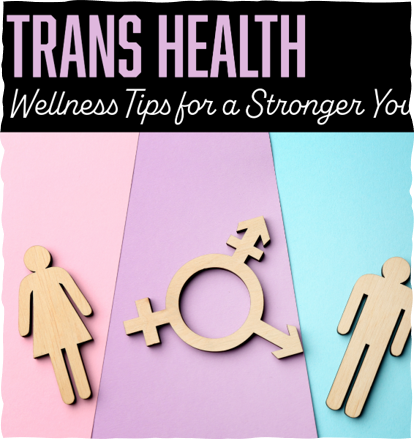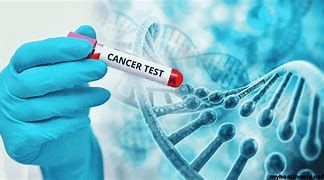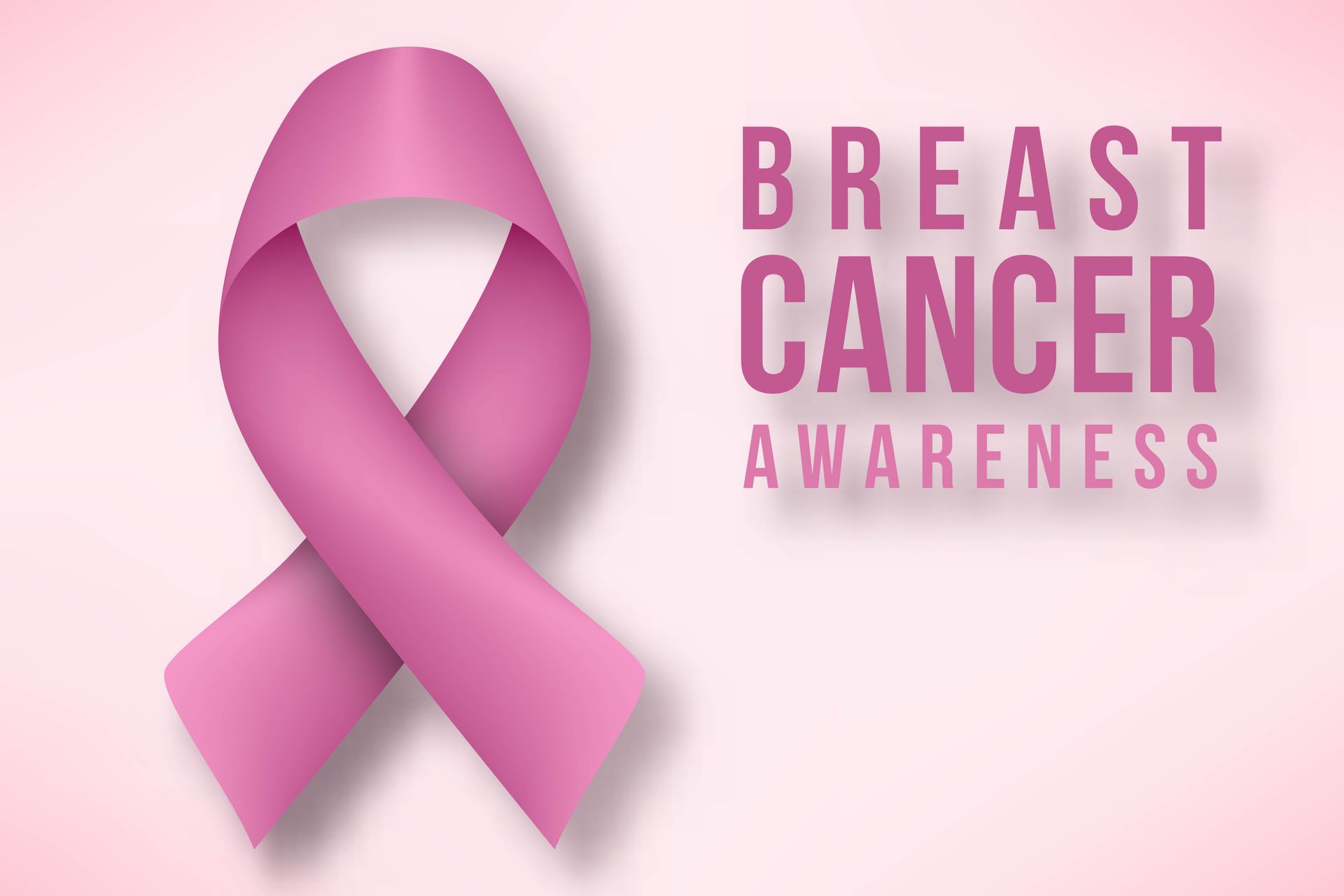Diversity Family Health BLOG
Find Information, Education, and Interesting Articles

Hey there, sunshine! ☀️ Pride Month is almost here, and that means parades, parties, and plenty of summer fun! While you’re dancing, making new friends, and living your best life, don’t forget to take care of your health—especially when it comes to sex. Let’s talk about how to have fun AND stay safe with a few easy tips and a little something called doxycycline (say it like this: dock-see-SYE-kleen ). 💖 What Is Safe Sex, Anyway? Safe sex means keeping yourself and your partner protected from infections and anything you’re not planning for—like STIs or pregnancy. Here’s how to keep it smart and sexy: 🎈 Use Condoms Condoms are like tiny superheroes. 🦸♂️ They help stop STIs and pregnancy. Always use a new one every time you have sex. 💬 Talk About It Before getting busy, talk to your partner about safe sex. Ask questions. Be honest. It’s cool to care about each other’s health! 🧪 Get Tested Even if you feel fine, getting tested for STIs helps protect you and your partners. Many infections don’t show signs right away. Regular check-ups = major self-care! 💊 Meet Doxycycline (a.k.a. “Doxy”) Doxycycline is a medicine that doctors can give you to help prevent some STIs . This is called doxy-PEP (that stands for “post-exposure prophylaxis”). If you take it within 72 hours after having sex without a condom, it can lower your risk of getting chlamydia and syphilis by 47%. Think of it like a “just in case” pill to stay healthy. ✅ How to Use Doxy the Right Way If your doctor gives you doxy-PEP, here’s how to make it work its magic: Take it as told : Follow your doctor’s directions—don’t skip any doses! Stay sun smart : Doxy can make your skin more sensitive to sunlight. Use sunscreen, wear a hat, and rock those shades. 😎 Water is your BFF : Take it with a full glass of water to avoid a bellyache. Skip the dairy at pill time : Milk, cheese, and yogurt can make it harder for your body to use the medicine. Try to eat those foods a few hours apart from your pill. 🏖️ Summer Safety Tips (Not Just for Sex!) Summer is HOT—and we want you to stay cool and healthy. Drink water: Keep that cute water bottle handy and stay hydrated. Beat the heat: Chill in the shade or head inside during the hottest part of the day. Plan ahead: Going on a trip? Pack your meds, condoms, and maybe a fan—because you’re gonna be 🔥. 🎉 Celebrate with Care This Pride, show your love, joy, and pride—but don’t forget to show your health some love, too. Safe sex and smart choices mean more time to dance, connect, and feel good all summer long. You deserve fun AND good health. So go ahead —be proud, be prepared, and stay safe! 🌈✨ Need help or have questions? Our team at Diversity Family Health is here for you. Happy Pride! ❤️🧡💛💚💙💜

March 31 is Transgender Day of Visibility , a day to honor the strength and resilience of transgender individuals while advocating for inclusivity and access to care. At Diversity Family Health, we recognize that health is a vital part of living authentically. Let’s explore steps transgender individuals can take to prioritize their health and well-being. Establish Regular Primary Care Visits Regular visits with a primary care provider (PCP) are essential for overall health. These visits help monitor for common health concerns, including high blood pressure, diabetes, and cholesterol, which can impact anyone, regardless of gender identity. For transgender individuals, PCP visits are also an opportunity to ensure gender-affirming care aligns with your overall health goals. Keep Gender-Affirming Hormone Therapy (GAHT) Monitored If you are on GAHT, regular monitoring of hormone levels and associated health markers like liver function, bone density, and cardiovascular health is critical. Maintaining the right balance in therapy not only supports your gender-affirming journey but also reduces risks of potential side effects. Stay Up-to-Date on Cancer Screenings Transgender individuals should follow cancer screening guidelines based on anatomy and hormone use. For example: Breast Cancer: Trans women on estrogen and trans men with breast tissue should follow screening recommendations. Cervical Cancer: Trans men with a cervix should get Pap smears as recommended. Prostate Cancer: Trans women with a prostate should discuss prostate cancer screening with their provider. Your healthcare provider can tailor a screening plan that works for your body and unique needs. Protect Your Mental Health Mental health is just as important as physical health. Transgender individuals often face unique stressors, such as discrimination or lack of support, that can lead to anxiety, depression, or other mental health challenges. Seeking affirming therapy or joining LGBTQ+ support groups can make a big difference in maintaining emotional well-being. Stay Current on Vaccinations and Preventive Health Vaccines, such as HPV, hepatitis A and B, and influenza, are crucial for preventing disease. Discuss any additional vaccines you might need, such as meningitis or COVID-19, with your provider. Preventive measures, like PrEP for HIV prevention, can also be vital for some individuals. Your Health is Worth Celebrating Transgender Day of Visibility is a reminder to celebrate who you are and take charge of your health. At Diversity Family Health, we’re proud to provide comprehensive, gender-affirming care in a supportive environment. Your health journey is unique, and we’re here to support you every step of the way. Let’s celebrate you—today and every day! Additional Resources: Trans Lifeline (Hotline and Support) CDC Health Resources for Transgender Individuals WPATH: Standards of Care for Transgender Health

Aging is inevitable, but looking older than you feel doesn’t have to be. With the right skincare routine, you can maintain a youthful appearance and keep your skin healthy for years. But with so many products promising miracle results, it’s important to separate fact from fiction. Here’s what actually works when it comes to anti-aging skincare. 1. Sunscreen Is Non-Negotiable If you do nothing else for your skin, wear sunscreen. UV exposure is the leading cause of premature aging, leading to wrinkles, sunspots, and loss of elasticity. A broad-spectrum sunscreen with at least SPF 30 should be applied daily, even when it’s cloudy or cold. 2. Retinoids Are the Gold Standard Retinoids, including retinol and prescription-strength tretinoin, are some of the most effective anti-aging ingredients available. They increase cell turnover, improve collagen production, and reduce fine lines and wrinkles. Start with a lower strength to minimize irritation and gradually increase as your skin adjusts. 3. Hydration and Moisturization Matter Dry skin accentuates wrinkles and fine lines. A good moisturizer with ingredients like hyaluronic acid, glycerin, and ceramides helps maintain hydration and strengthens the skin barrier. Well-hydrated skin looks plumper and healthier. 4. Vitamin C for Brightening and Protection Vitamin C is a powerful antioxidant that helps fight free radical damage, brightens skin, and boosts collagen production. Using a vitamin C serum in the morning, before applying sunscreen, can improve overall skin tone and texture over time. 5. Exfoliation (But Not Too Much) Regular exfoliation removes dead skin cells, allowing better absorption of skincare products and revealing fresher skin. However, over-exfoliating can damage your skin barrier. Stick to chemical exfoliants like AHAs or BHAs a few times a week instead of harsh scrubs. 6. Lifestyle Plays a Huge Role Skincare products can only do so much if your lifestyle doesn’t support healthy skin. Staying hydrated, eating antioxidant-rich foods, getting enough sleep, and managing stress all contribute to youthful skin. Smoking and excessive alcohol consumption accelerate aging and should be avoided. 7. Consistency Is Key There’s no overnight fix for aging skin. The best results come from a consistent routine using scientifically backed ingredients. Stick with your skincare regimen and be patient—visible improvements take time. Final Thoughts Anti-aging skincare isn’t about looking younger at all costs; it’s about maintaining healthy, radiant skin as you age. Focus on proven ingredients, protect your skin from the sun, and adopt a holistic approach to skincare. With the right habits, your skin will thank you in the years to come.

When we think about being healthy, we often think about our bodies, like making sure we don’t get sick or going to the doctor. But did you know that our health is also affected by things in our daily lives, like where we live, if we have enough food, or if we feel safe? These are called *Social Determinants of Health*, and they can have a big effect on how healthy we are. In this post, we'll talk about what these “social determinants” are, how they affect your health, and how you can talk to your doctor or nurse about these problems so they can help you find resources to make things a little easier. What Are Social Determinants of Health? Social determinants of health, or SDOH, are things in our lives that aren’t directly related to our bodies but still affect our health. They include: 1. **Money and Jobs** : If a family has a low income or if someone doesn’t have a job, it can be hard to afford things like healthy food, medicines, and trips to the doctor. 2. **Home and Neighborhood** : This includes things like housing (where you live) and the safety of your neighborhood. If a neighborhood doesn’t feel safe or clean, or if there isn’t reliable transportation, it can make it harder to stay healthy or go to the doctor. 3. **Education** : If someone hasn’t had access to much education, it might be harder to understand health information or find ways to stay healthy. 4. **Social Connections** : This means the people around you, like friends, family, and neighbors. If someone doesn’t have much support or if they face discrimination, they may feel more stressed or even sad. 5. **Access to Healthcare** : This means being able to see a doctor, get medicines, and find hospitals or clinics close by. If someone doesn’t have easy access to these things, they may struggle to stay healthy. How Do Social Determinants Affect Your Health? Social determinants of health can create *health disparities*, which are differences in health outcomes among different groups of people. Here are some examples: Low Income: If a family doesn’t have enough money, they might skip doctor’s visits or can’t buy medicines they need. This can lead to health problems getting worse over time. Housing Problems: If someone doesn’t have a stable place to live, they might feel stressed and have trouble keeping up with their health. Food Insecurity: Not having enough healthy food can lead to health problems like obesity, diabetes, and heart disease. When we’re dealing with things like housing problems, money worries, or lack of food, it can be hard to focus on staying healthy because the focus is on just surviving the day. How to Talk to Your Provider About These Problems Your provider wants to help you with your overall health, which includes understanding the challenges you face outside of their office. Here are some tips for talking to them about these things: Think About What You Need Help With: Try to be clear about what problems you’re facing. Is it hard to afford food? Are you worried about paying for medicine? Making a list can help you share these things with your provider. Be Honest It’s okay to tell your provider what’s really going on. They aren’t there to judge you but to help you. Ask for Resources: Many clinics and hospitals have social workers or patient advocates who can help you find local resources. Some places offer things like food assistance, transportation help, and other services. Talk About How You’re Feeling: If these problems are making you feel stressed, anxious, or sad, let your doctor or nurse know. They may be able to connect you with mental health resources too. Resources That Can Help If you’re dealing with challenges related to social determinants, there are programs and places that might be able to help: Community Health Centers: These clinics often provide medical care at a lower cost or with a sliding fee scale. Food Banks and Pantries: Local organizations can help provide food if you’re struggling with food costs. Housing Assistance: Many states have programs to help people who are experiencing housing issues. Social Services: Your healthcare provider may refer you to people who specialize in helping you find local resources, such as financial counseling or job support. Remember Social determinants of health can make a big difference in how healthy we feel. But if you talk to your provider about the problems you’re facing, they can help you find support and resources. You don’t have to go through it alone—there are people and programs that want to help you succeed, not just in your health but in your life. Beginning in 2025, our clinicians will start asking about topics like your mental health and social factors that might impact your health during follow-up visits. This information will help us better understand any gaps in resources within our community and identify ways to improve support. Your comfort is our priority, so please know that it’s completely okay if you choose not to answer these questions. We want our clinic to be a safe, open place where you feel comfortable sharing and receiving care. Our goal is to keep providing you with the best possible support and healthcare.

January marks Cervical Cancer Awareness Month , a time to highlight the importance of screening and prevention. While cervical cancer awareness is often focused on individuals with a cervix, it's crucial to expand the conversation to include anal cancer, particularly in the LGBT+ community. Cervical Cancer Screening for Trans Men and Nonbinary Individuals For transgender men and nonbinary people with a cervix, cervical cancer screenings can be challenging due to discomfort, gender dysphoria, or previous negative experiences in healthcare settings. At Diversity Family Health, we prioritize trauma-informed and affirming care to ensure all our patients feel safe during these critical screenings. The Link Between HPV and Anal Cancer Human papillomavirus (HPV) is the leading cause of cervical and anal cancers. Individuals who are HIV-positive or engage in receptive anal sex may have an increased risk of anal cancer, making regular screening and prevention a priority. How You Can Protect Yourself Get Vaccinated: The HPV vaccine is highly effective in preventing the strains of HPV most associated with cervical and anal cancers. It’s recommended up to age 45 for those who haven’t yet been vaccinated. Screen Regularly: Pap smears and anal cytology (where appropriate) are vital for early detection of precancerous changes. Practice Safe Sex: Using condoms and dental dams can reduce HPV transmission. By taking these steps, you can reduce your risk of HPV-related cancers and live a healthier life. Contact us today to schedule your HPV vaccine or screening!

As the seasons change and days get darker earlier in the afternoon, many people begin to feel their mood shift. While it’s normal to feel down or anxious every now and then, it’s important to be able to recognize when these feelings are not normal. Knowing the signs and learning some easy ways to cope can help you or someone you care about manage these feelings better. What is Anxiety? Anxiety often shows up as intense worry that’s hard to control. It can make you feel nervous or even panicked, with signs like a fast heartbeat, trouble focusing, feeling restless, and sometimes a hard time falling asleep. Anxiety might also cause you to worry about things that aren’t likely to happen. Sometimes anxiety can also cause feelings of nausea, abdominal cramping, headache, and tense muscles. What is Depression? Depression, on the other hand, is more about feeling sad or hopeless for long stretches. It can make you lose interest in activities you usually enjoy, and you might feel overly tired, lack motivation to do activities, or have trouble sleeping or eating. Depression can also cause you to feel isolated from others or think negative thoughts often. With depression, this may cause you to be more irritable and easily overwhelmed. Easy Coping Skills You Can Try Dealing with anxiety and depression can take time, but here are some simple tips to help manage these feelings day by day: Breathing Exercises: Take deep breaths to help calm your body and mind. Try “square breathing” by inhaling for four seconds, holding for four, exhaling for four, and holding again. Challenge Negative Thoughts : When you start to think negatively, try asking yourself if there’s real evidence for these thoughts. This can help you see things more clearly and calm down a bit. Set Small Goals : Even if it’s something simple, like taking a short walk or finishing a small task, reaching a goal can boost your mood and give you a feeling of accomplishment. Stay Connected with Others : Spending time with friends or family, even for a little bit, can lift your spirits. Support groups can also help you meet others who understand what you’re going through. Create a Daily Routine : Having a regular routine can bring stability. Try to wake up, eat, and go to bed around the same times every day to help balance your energy. Practice Gratitude : Writing down things you’re thankful for—even small things—can help you focus on positive moments instead of stress or sadness. When to Get Help Sometimes, anxiety and depression need more help than self-care can offer. Here are signs it may be time to talk to a counselor or therapist: Feeling sad or anxious for more than a few weeks Struggling with daily tasks, school, or relationships Feeling hopeless or thinking about self-harm Counselors and therapists can help you learn new ways to manage these feelings. You can start by talking to a parent, teacher, or your provider, who can help you find a professional. Getting Support If you or someone you know needs immediate help, call the 988 Suicide & Crisis Lifeline, which is available 24/7. Remember, recognizing that you need support is a strong first step, and there are people ready to help you feel better. Learning about anxiety and depression and using some of these tips can help make day-to-day life easier and brighter. You don’t have to go through it alone—support is always available when you need it. If you feel like you are struggling with your emotions and moods don’t hesitate to reach out to your provider at Diversity Family Health.

Cancer is often detected at a late stage, limiting treatment options and impacting outcomes. However, when discovered early, there may be more treatment possibilities and improved prognoses. We are proud to now offer the Galleri® multi-cancer early detection test* to our patients. Galleri is a groundbreaking test that screens for a shared signal across dozens of different cancers, including many that currently lack recommended screening methods. In clinical studies, Galleri detected cancer signals from over 50 types of cancer through a simple blood draw. KeyPoint's to remember: Galleri is a screening tool, not a diagnostic test. A positive result requires follow-up diagnostic testing to confirm cancer. The test identifies active cancer but does not assess genetic risk for future cancer development. Not all cancers can be detected in the blood, and both false positive and false negative results can occur. To learn more about the Galleri test, visit galleri.com or watch this informational video . Empower your health decisions by contacting us for an appointment to see if Galleri is right for you. *The Galleri test is recommended for adults at increased risk of cancer, typically those aged 50 and older, and should be used alongside existing cancer screening methods, not as a replacement. * The Galleri test is not commonly covered by insurance and current cost is $900 to perform.

The holiday season can be a time of joy, but it can also bring added stress, anxiety, and depression, especially for those in the LGBT+ community. These months can feel isolating for individuals who may not have supportive families or those struggling with mental health issues. How are You Feeling? If you're feeling down, it's essential to reach out for help. Mental health screenings for depression and anxiety can be done quickly in your provider’s office. Symptoms such as persistent sadness, lack of interest in activities, fatigue, or anxiety may indicate that it’s time to talk to someone. Treatment Options: There are various treatment options available: Counseling/Therapy: Cognitive Behavioral Therapy (CBT), talk therapy, and other forms of counseling can help manage symptoms of depression and anxiety. Medication: For some, medications such as antidepressants or anti-anxiety medications may be necessary. Work with your healthcare provider to find a treatment that’s right for you. Managing Seasonal Affective Disorder (SAD): Seasonal Affective Disorder (SAD) is a form of depression that occurs during the winter months when there’s less sunlight. Symptoms include low energy, sleeping too much, and feeling hopeless. Treatment options include light therapy, vitamin D supplements, and regular physical activity. Remember, mental health is just as important as physical health. Reach out to your provider if you're struggling this holiday season.

October is Breast Cancer Awareness Month, a time to promote the importance of breast cancer screenings and early detection, especially within the LGBT+ community. While breast cancer predominantly affects cisgender women, it's essential for everyone, including transgender patients, to be vigilant about their breast health. Breast Cancer Screenings for Trans Patients: For Trans Women: Trans women who have undergone hormone therapy with estrogen for at least five years may be at an increased risk for breast cancer. Regular mammograms may be recommended starting at age 50 or sooner, depending on your healthcare provider’s advice. For Trans Men: Trans men who have not had top surgery, or who retain some breast tissue after surgery, should still consider regular breast cancer screenings. Mammograms may be necessary based on your remaining breast tissue and personal risk factors. Mammograms and Self-Exams: Mammograms: These are one of the most effective early detection tools. It’s recommended that people between the ages of 50 and 74 undergo a mammogram every two years, but your provider may recommend starting earlier depending on your risk. Self-Exams: Monthly self-exams are a great way to stay aware of any changes in breast tissue. Look for lumps, skin changes, or nipple discharge, and report any concerns to your healthcare provider right away. Support for Patients Undergoing Breast Cancer Treatment: If you're diagnosed with breast cancer, remember that you're not alone. Support groups, counseling, and patient advocacy services are available to help you through treatment, whether it's surgery, chemotherapy, or radiation. Remember, early detection saves lives. Schedule your screening today!

Smoking disproportionately affects the LGBT+ community, and individuals living with HIV are at even higher risk for smoking-related illnesses. It’s time to take control of your health and quit smoking. Smoking in the LGBT+ Community: According to the CDC, approximately 20.6% of LGBT+ adults smoke , compared to 14.9% of heterosexual adults. This disparity may be due to stress, stigma, and targeted marketing by the tobacco industry toward the LGBT+ community. Take Control of Your Health: During your next visit, talk to your healthcare provider about smoking cessation. Providers can screen for tobacco use and provide resources such as: Behavioral Counseling: Therapy or support groups to help you stay on track. Nicotine Replacement Therapy (NRT): Products like nicotine patches or gum. Prescription Medications: Medications such as varenicline (Chantix) and bupropion (Zyban) can help reduce cravings and ease withdrawal symptoms. Resources for Support: There are numerous resources available to help you quit: Quitlines: Free phone-based services like 1-800-QUIT-NOW. Online Support: Websites like smokefree.gov offer tailored support for the LGBT+ community. Apps: There are many apps available to help track progress and provide motivation. Quitting smoking is one of the best things you can do for your health, especially if you’re living with HIV. Reach out for support today—your future self will thank you!
